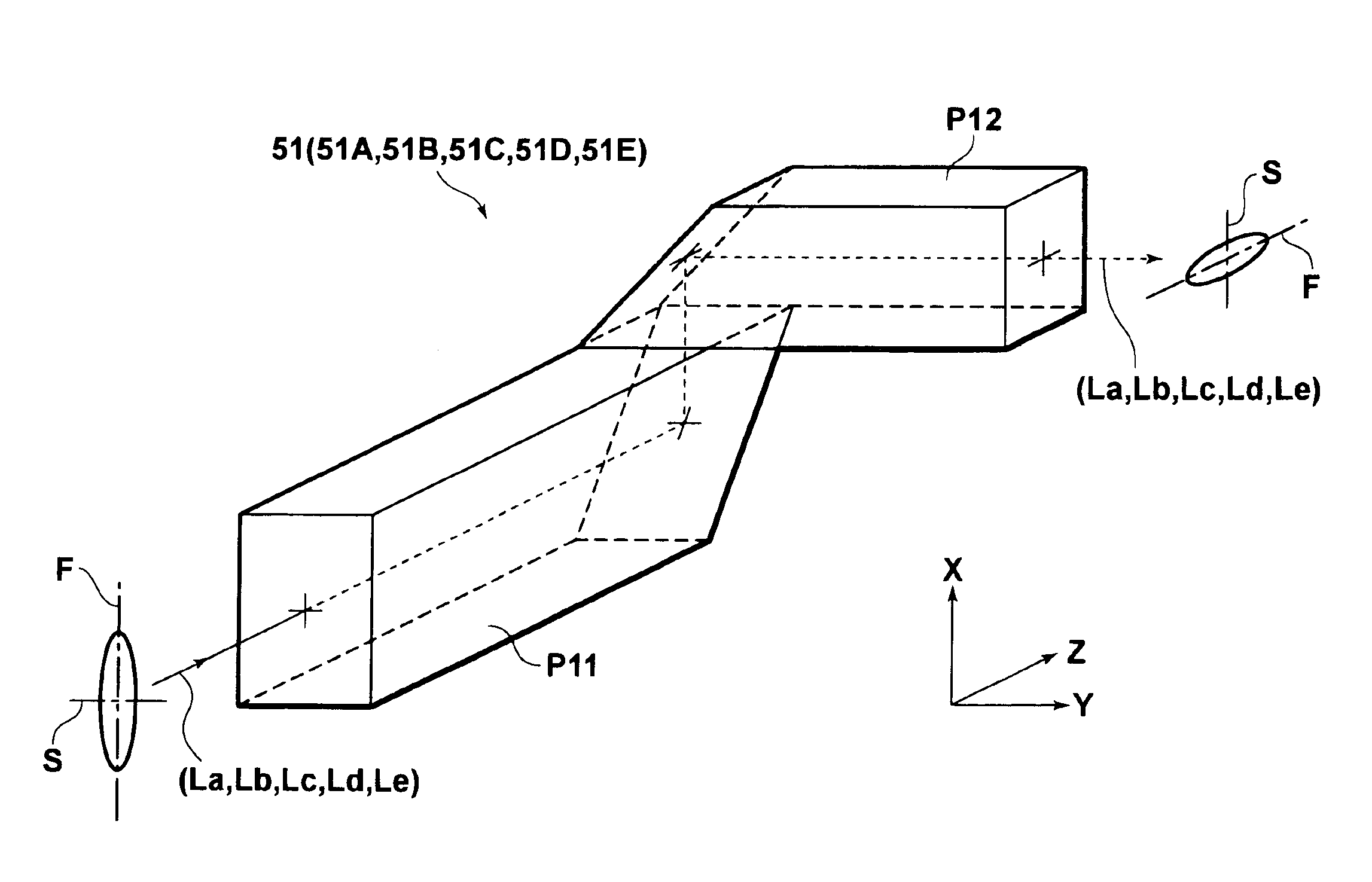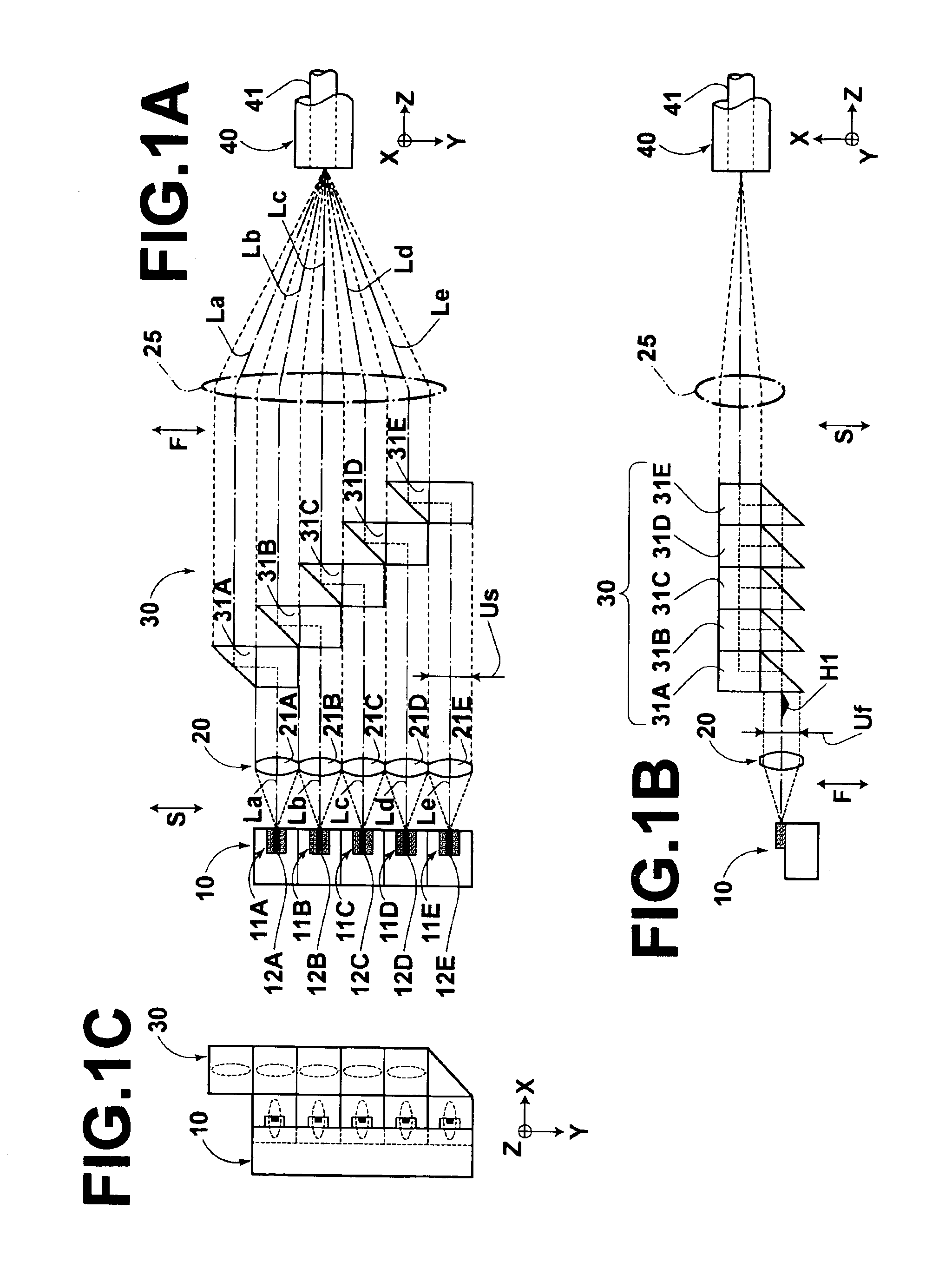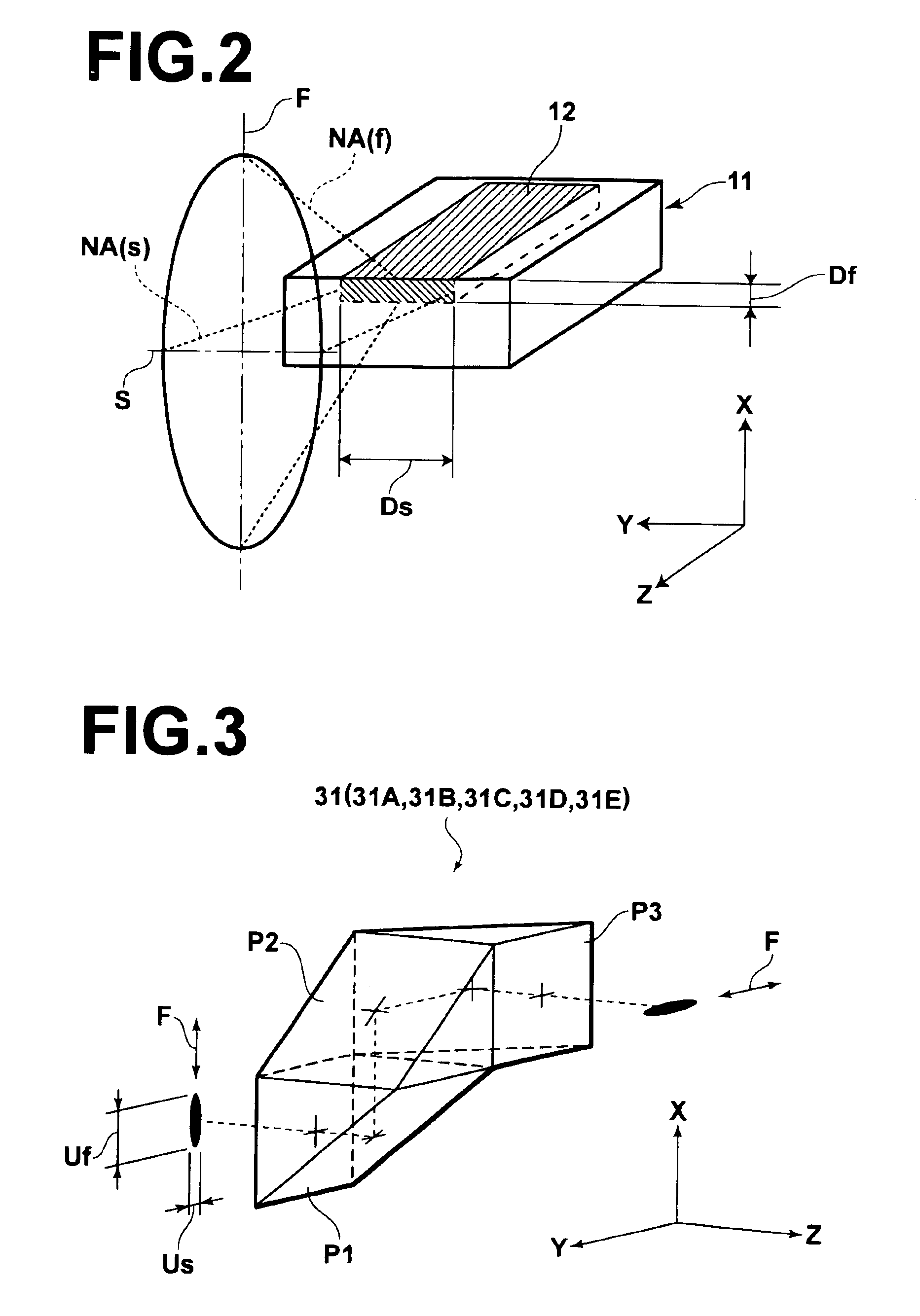Laser multiplexing apparatus
a multiplexing apparatus and laser technology, applied in the direction of mechanical apparatus, instruments, lenses, etc., can solve the problems of inability to accurately converge the above light beam spatial utilization efficiency, and inability to form satisfactory wavefronts in the directions of the slow axes, etc., to achieve easy application of high reflection coatings, reduce device size, and high space utilization efficiency and coupling efficiency
- Summary
- Abstract
- Description
- Claims
- Application Information
AI Technical Summary
Benefits of technology
Problems solved by technology
Method used
Image
Examples
embodiment ex1
[0139]FIGS. 10A and 10B are schematic views illustrating the construction of a laser light multiplexing apparatus 101 according to Embodiment Ex1. FIG. 10A is a plan view of the laser light multiplexing apparatus 101. FIG. 10B is a front view of the laser multiplexing apparatus 101. FIG. 11 is a perspective view of a prism which is utilized in the light beam rearrangement optical system.
[0140]The laser light multiplexing apparatus 101 of embodiment Ex1 comprises: the laser block 111B, on which five semiconductor lasers are provided; the collimating optical system 111C; the light beam rearrangement optical system 111R; the convergence optical system 111F; and the optical fiber 111L.
[0141]Note that as described above, the emission width Ds in the direction of the slow axes, of the light beams emitted from the five semiconductor lasers provided on the laser block 111B, is 25 μm. The focal distance of the convergence optical system 111F is 30 mm in the direction of the fast axes and 2.8...
embodiment ex2
[0147]FIGS. 12A and 12B are schematic views illustrating the construction of a laser light multiplexing apparatus 102 according to Embodiment Ex2. FIG. 12A is a plan view of the laser light multiplexing apparatus 102. FIG. 12B is a front view of the laser multiplexing apparatus 102. FIG. 13 is a perspective view of a prism which is utilized in the light beam rearrangement optical system.
[0148]The laser light multiplexing apparatus 102 of embodiment Ex1 comprises: the laser block 112B, on which five semiconductor lasers that emit light beams in the −Y direction are provided; the collimating optical system 112C; the light beam rearrangement optical system 112R; the convergence optical system 112F; and the optical fiber 112L.
[0149]Note that as described above, the emission width Ds in the direction of the slow axes, of the light beams emitted from the five semiconductor lasers provided on the laser block 112B, is 25 μm. The focal distance of the convergence optical system 112F is 30 mm...
embodiment ex3
[0155]FIGS. 14A and 14B are schematic views illustrating the construction of a laser light multiplexing apparatus 103 according to Embodiment Ex3. FIG. 14A is a plan view of the laser light multiplexing apparatus 103. FIG. 14B is a front view of the laser multiplexing apparatus 103.
[0156]The laser light multiplexing apparatus 103 of embodiment Ex3 comprises: the laser block 113B, on which ten semiconductor lasers that emit light beams in the +Z direction are provided; the collimating optical system 113C; the light beam rearrangement optical system 113R; the convergence optical system 113F; and the optical fiber 113L.
[0157]Note that as described above, the emission width Ds in the direction of the slow axes, of the light beams emitted from the ten semiconductor lasers provided on the laser block 113B, is 30 μm. The focal distance of the convergence optical system 113F is 60 mm in the direction of the fast axes and 2.85 mm in the direction of the slow axes. The core diameter of the op...
PUM
 Login to View More
Login to View More Abstract
Description
Claims
Application Information
 Login to View More
Login to View More - R&D
- Intellectual Property
- Life Sciences
- Materials
- Tech Scout
- Unparalleled Data Quality
- Higher Quality Content
- 60% Fewer Hallucinations
Browse by: Latest US Patents, China's latest patents, Technical Efficacy Thesaurus, Application Domain, Technology Topic, Popular Technical Reports.
© 2025 PatSnap. All rights reserved.Legal|Privacy policy|Modern Slavery Act Transparency Statement|Sitemap|About US| Contact US: help@patsnap.com



